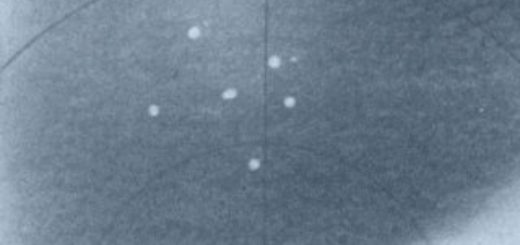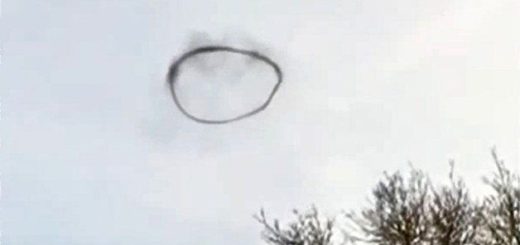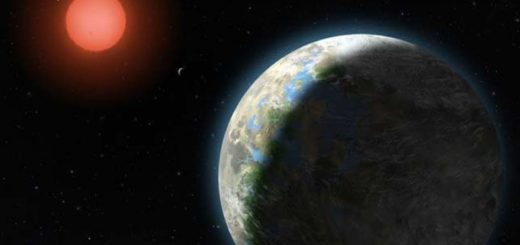First Alien Planet From Another Galaxy Discovered

Astronomers have confirmed the first discovery of an alien planet in our Milky Way that came from another galaxy, they announced Thursday.
The Jupiter-like planet orbits a star that was born in another galaxy and later captured by our own Milky Way sometime between 6 billion and 9 billion years ago, researchers said. A side effect of the galactic cannibalism brought a faraway planet within astronomers’ reach for the first time ever. [Illustration of the extragalactic planet]
“This is very exciting,” said study co-author Rainer Klement of the Max-Planck-Institut fur Astronomie (MPIA) in Heidelberg, Germany. “We have no ability to directly observe stars in foreign galaxies for planets and confirm them.”
Stars currently residing in other galaxies are simply too far away, Klement added.
The find may also force astronomers to rethink their ideas about planet formation and survival, researchers said, since it’s the first planet ever discovered to be circling a star that is both very old and extremely metal-poor. Metal-poor stars are lacking in typically lack elements heavier than hydrogen and helium.
The newfound planet, called HIP 13044b, survived through its star’s red-giant phase, which our own sun will enter in about 5 billion years. So studying it could offer clues about the fate of our solar system as well, researchers said.
HIP 13044b sits extremely close to its parent star, which has now contracted again. The planet completes an orbit every 16.2 days, and it comes within about 5 million miles (8 million kilometers) of its parent star at closest approach — just 5.5 percent of the distance between Earth and the sun.
Searching for telltale tugs
The newly discovered alien planet is at least 25 percent more massive than Jupiter, researchers said. It orbits the star HIP 13044 about 2,000 light-years from Earth in the constellation Fornax.
HIP 13044 is about as massive as the sun, and it is nearing the end of its life. The star has already gone through its red giant phase — when sun-like stars bloat enormously after exhausting the hydrogen fuel in their cores.
The star is also composed almost entirely of hydrogen and helium. It is less than only 1 percent as metal-rich as our sun, making it the most metal-poor star known to host a planet, researchers said.
The research team scrutinized HIP 13044’s movement using a telescope at the European Southern Observatory’s La Silla Observatory in Chile. After six months of observing, they detected tiny movements that betrayed the gravitational tug of an orbiting planet.
“For me, it was a big surprise,” said study lead author Johny Setiawan, also of MPIA. “I was not expecting it in the beginning.”
Setiawan, Klement and their colleagues report their results online in the Nov. 18 issue of Science.
An extragalactic origin
Last year, another research team announced it may have detected a planet in the Andromeda galaxy. However, that faraway find will be nearly impossible to confirm.
The astronomers performing that previous study used a method called gravitational microlensing, which only works when a planet-hosting star happens to line up with another star. Such events happen very rarely.
HIP 13044, on the other hand, belongs to the Helmi stream of stars that were once part of a nearby dwarf galaxy. Astronomers believe our own Milky Way gobbled up the Helmi stream between 6 billion to 9 billion years ago.
While it’s technically possible that the planet was born in the Milky Way and then stripped from its parent star by the interloping HIP 13044, the odds of that happening are minuscule, researchers said.
So HIP 13044 almost certainly has an extragalactic origin.
“We can be pretty sure about that,” Klement told SPACE.com. “Stellar encounters in the Milky Way essentially don’t occur. The chance that the star captured the planet from another star by an encounter is very, very unlikely.”
Rethinking theories of planet formation
Most of the nearly 500 alien planets discovered so far orbit metal-rich stars, researchers said. And a metal-rich star is fundamental to the dominant theory explaining how giant planets form — the core-accretion model.
This model posits that dust and gas particles circling a young star cling together and gradually become larger, forming rocks, boulders and eventually the stony cores of giant, gassy planets like HIP 13044b.
Because its parent star is so metal-poor, HIP 13044b may have formed in a different way, researchers said. The planet may have arisen via the gravitational attraction between gas molecules, through a process termed the disk-instability model. So it may not have a rocky core at all.
“You are able to form pure gas planets by this method,” Klement said.
The fact that such a metal-poor star can host planets should inspire astronomers to look at other stars like it, Klement added. Astronomers haven’t examined many up to this point, so they don’t have a good handle on how frequently planets might pop up around low-metal stars.
The discovery also hints that planets may have studded the cosmos from the universe’s early days — back when pretty much all stars were metal-poor.
“You can think of the very first stars in the universe, or the second or third generation of stars,” Klement said. “Could they already have been able to form planets? That’s a very fascinating question.”
Vision of our solar system’s fate?
Our own sun is on the same stellar-evolution track as HIP 13044; scientists predict it will bloat into a red giant in 5 billion years or so. So astronomers may be able to learn something about the fate of our solar system by studying HIP 10344b and its parent star, researchers said.
That fate would not be pretty for Earth. HIP 13044b likely once orbited much farther away from its star but spiraled closer and closer during the red giant phase due to friction with the swollen star’s envelope, researchers said. Any more interior planets would have been destroyed during this process.
When our own sun enters its red giant phase, Earth will likely get cooked.
“The inner planets, including Earth, maybe will not survive,” Setiawan told SPACE.com. “But Jupiter, Saturn and the outer planets might move to closer-in orbits, exactly like we detected.”
HIP 13044b is a survivor, but it won’t live forever. Its parent star is due to expand again in the next phase of its stellar evolution, researchers said, and this time the planet will almost certainly be engulfed.



 Creators of mankind
Creators of mankind Description of “Tall white aliens”
Description of “Tall white aliens” Where they came from?
Where they came from? About hostile civilizations
About hostile civilizations The war for the Earth
The war for the Earth “Tall white aliens” about eternal life
“Tall white aliens” about eternal life Video: “Nordic aliens”
Video: “Nordic aliens” Aliens
Aliens Alien encounters
Alien encounters The aliens base
The aliens base UFO
UFO Technology UFO
Technology UFO Underground civilization
Underground civilization Ancient alien artifacts
Ancient alien artifacts Military and UFO
Military and UFO Mysteries and hypotheses
Mysteries and hypotheses Scientific facts
Scientific facts


















